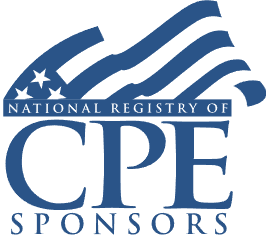Trusts Serving as Grantors to Other Trusts: Drafting Multi-Trust Structures for Optimal Tax Results
Essential language in Grantor and Grantee Trusts

Course Details
- smart_display Format
On-Demand
- signal_cellular_alt Difficulty Level
Intermediate
- work Practice Area
Accounting
- event Date
Tuesday, October 3, 2017
- schedule Time
1:00 PM E.T.
- timer Program Length
90 minutes
-
This 90-minute webinar is eligible in most states for 1.5 CLE credits.
-
BARBRI is a NASBA CPE sponsor and this 110-minute webinar is accredited for 2.0 CPE credits.
-
BARBRI is an IRS-approved continuing education provider offering certified courses for Enrolled Agents (EA) and Tax Return Preparers (RTRP).
-
Live Online
On Demand
This CLE/CPE course will provide estate planners with a practical guide to the tax consequences of structuring trusts that own other trusts. The panel will discuss critical drafting language in both the grantor and grantee trust, and outline potential tax saving opportunities and risks in multi-trust structures.
Description
In Letter Ruling 201633021, the IRS recently took the (somewhat surprising) position that a trust may serve as a grantor over another trust, even if the two trusts have different tax attributes. While not binding, the Service’s position creates interesting opportunities for estate planners.
The PLR addressed a scenario in which a trust (Trust I) established by a decedent transferred property to a new, second trust (Trust II), after the death of the original grantor. Trust I retained certain powers over Trust II which would create grantor trust status if retained by an individual grantor.
The Service held that Trust I could be a grantor as to Trust II based on Trust I’s retained powers, applying the rules of §671 et seq.
Our panel will discuss this ruling and other code provisions and regulations that can apply when an existing trust forms and funds a new trust. The panel will discuss critical drafting language in both the grantor and grantee trust and outline potential tax saving opportunities and risks in multi-trust structures.
Outline
- Grantor Trust Rules of Sections 671-678
- Options for structuring secondary trusts
- Original grantor as grantor of Trust II
- Beneficiary as a grantor of Trust II
- Trust II as a complex trust
- Critical drafting language to accomplish intended status
- Letter Ruling 201633021: Trust I as grantor of Trust II
- Planning opportunities and risks
Benefits
The panel will review these and other key issues:
- Various tax results that are possible when one trust establishes and funds a new trust
- Recommended provisions to accomplish the desired tax results
- Potential risks of using trusts as grantors to other trusts
- Possible impact of PLR 201633021
NASBA Details
Learning Objectives
After completing this course, you will be able to:
- Identify the tax status of a trust created by another trust
- Identify language in trust documents that creates certain tax results
- Analyze the pros and cons of treating a trust as grantor of another trust
- Field of Study: Taxes
- Level of Knowledge: Intermediate
- Advance Preparation: None
- Teaching Method: Seminar/Lecture
- Delivery Method: Group-Internet (via computer)
- Attendance Monitoring Method: Attendance is monitored electronically via a participant's PIN and through a series of attendance verification prompts displayed throughout the program
- Prerequisite: Three years+ business or public firm experience at mid-level within the organization, preparing complex trusts and tax schedules; supervisory authority over other attorneys/estate planners. Knowledge and understanding of intentionally defective grantor trust structures and rules. Familiarity with structuring sales transactions to trusts; familiarity with estate planning and trust issues specifically including gain recognition, acceleration and other trust provisions, and asset basis.

Strafford Publications, Inc. is registered with the National Association of State Boards of Accountancy (NASBA) as a sponsor of continuing professional education on the National Registry of CPE Sponsors. State boards of Accountancy have final authority on the acceptance of individual courses for CPE Credits. Complaints regarding registered sponsons may be submitted to NASBA through its website: www.nasbaregistry.org.

Strafford is an IRS-approved continuing education provider offering certified courses for Enrolled Agents (EA) and Tax Return Preparers (RTRP).
Unlimited access to premium CLE courses:
- Annual access
- Available live and on-demand
- Best for attorneys and legal professionals
Unlimited access to premium CPE courses.:
- Annual access
- Available live and on-demand
- Best for CPAs and tax professionals
Unlimited access to premium CLE, CPE, Professional Skills and Practice-Ready courses.:
- Annual access
- Available live and on-demand
- Best for legal, accounting, and tax professionals
Unlimited access to Professional Skills and Practice-Ready courses:
- Annual access
- Available on-demand
- Best for new attorneys
Related Courses
Recommended Resources
Gain a Competitive Edge Through Efficient CPE Strategies
- Learning & Development
- Business & Professional Skills
- Career Advancement
